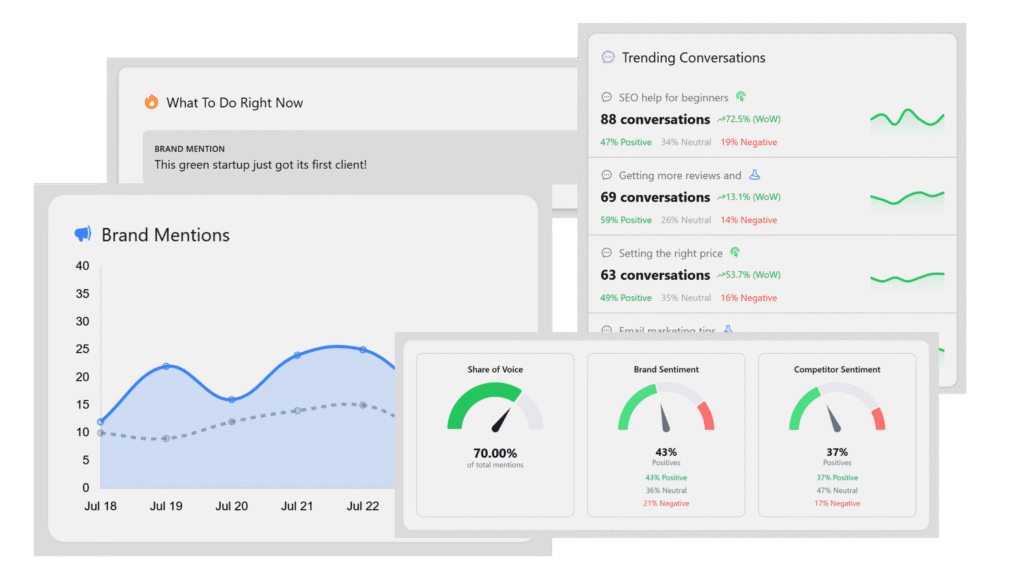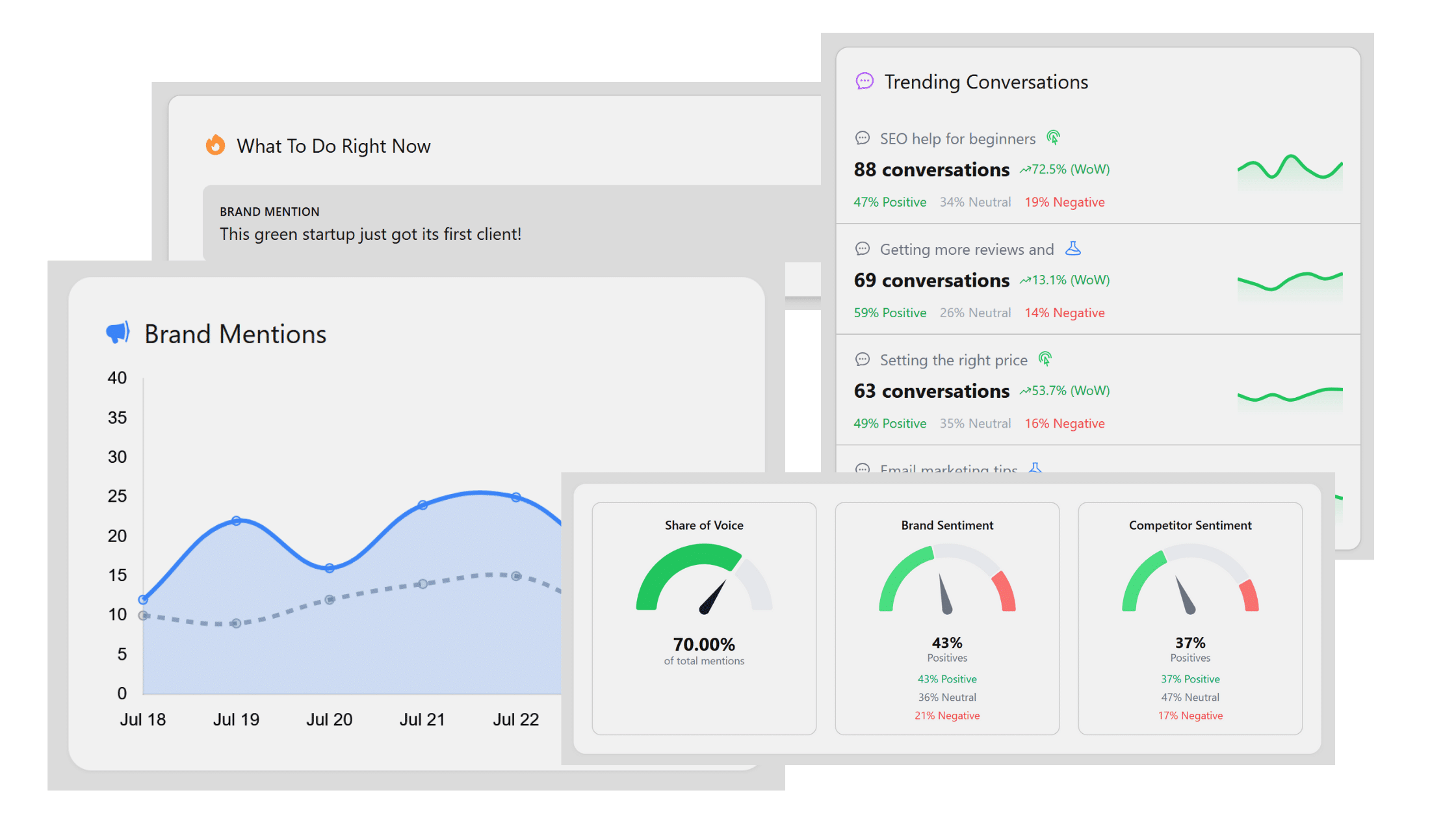Social media monitoring is more than a brand reputation tool. Used correctly, it can act as a real-time research lab for product teams and a lead qualification engine for sales. When people talk online, they reveal their pain points, praise, purchase intentions, and unmet needs. If your teams are listening, they can act fast and win smarter.
I’ve seen the best teams build cross-functional playbooks around social insights. Here’s how.
For Product Teams: Turn Social Feedback Into Roadmap Gold
Discover Unfiltered Customer Feedback
People often speak more honestly on social platforms than in surveys. Social media monitoring uncovers recurring complaints, desired features, or usability issues that product managers might otherwise miss. For example, if hundreds of users are frustrated by a feature update, that’s an early signal worth acting on.
The GSA encourages government agencies to use social media data to improve digital services. The same applies in the private sector: listen to improve. But social media monitoring should go beyond just listening for direct feedback. Done correctly, it helps brands understand trends within specific communities.
Tools like Karmatic.ai do exactly that. They help brands listen for relevant conversations and provides social sentiment analysis based on the findings.
Validate New Product Ideas
Before investing in R&D or prototyping, scan social media for demand signals. Are people asking for a feature your competitor lacks? Are they hacking workarounds that suggest a missing function? Use this data to prioritize your roadmap.
And communities like those on Reddit are known for being direct. When a community wants something or has a specific issue, they’re often pretty vocal about it. The challenge is finding those conversations. That’s where a social listening tool comes in handy.
Track Competitive Gaps
By monitoring competitor mentions, you can spot where customers are dissatisfied and where your brand could fill the void. It’s like having a focus group that runs 24/7. And this is the kind of feedback you won’t find in a competitive press release.
Real-world feedback happens instantly and constantly. Social media monitoring can help a product team find real reactions to featured as soon as people share them.
For Sales Teams: Spot Opportunities and Boost Conversion
Of course, features aren’t the only focus for social media monitoring. The sales team, in conjunction with marketing, directly drives revenue. And social media monitoring can help both departments.
1. Identify Leads in Real Time
Someone posts “Looking for a new CRM” on LinkedIn or asks Twitter for “email marketing tools that actually work.” With smart monitoring in place, your team can jump in and start the conversation early. These are high-intent buyers.
Modern social media montioring tools like Karmatic go even further. They use large language models (LLMs) to identify intent and desire far beyond a specific focus keyword, and they surface the relevant conversations as they happen.
2. Understand Buyer Pain Points
By monitoring what prospects say about your category or competitors, your reps gain context that makes discovery calls stronger. Instead of pitching cold, they can lead with empathy and insight.
This is pretty similar to what we see with product teams. Sales teams can identify pain points for their audience and craft pitches to salve those problems.
3. Equip Reps With Battle Cards
Social insights can feed competitive intelligence. If a key competitor is receiving negative feedback about onboarding or pricing, that becomes a talking point for your sales team to use tactfully in the field.
The best way to understand the competition isn’t just by seeing what they offer. It comes from understanding how their clients, and their former clients, feel about them. Understand what they like, and just as importantly, understand why they left the competition.
4. Shorten the Sales Cycle
When your team speaks the same language as your prospects and anticipates objections based on real-time sentiment, the entire sales process becomes more efficient and authentic.
Cross-Functional Success: The Social Intelligence Loop
When social data flows between marketing, product, and sales, your organization becomes more agile and aligned. Here’s how to build that loop:
- Set up shared dashboards with tags for product feedback, feature requests, and buying signals.
- Create regular reports summarizing key themes from social data.
- Hold monthly syncs across departments to discuss trends, adjust messaging, and prioritize roadmap items.
These habits build a culture where everyone is tuned in to the customer conversation.

FAQs: How Social Monitoring Supports Sales and Product
How can I get my product team to care about social media insights?
Show them recurring data. Build a one-page report that shows how many users mention a missing feature or a competitor advantage. Social proof is persuasive when presented clearly.
Can social media replace formal user research?
Not entirely, but it’s a strong supplement. Social insights help you form hypotheses that you can later validate with interviews or testing.
Should sales reps respond directly to leads found on social media?
Yes, but with tact. Always offer value first, not a hard pitch. Sales should collaborate with social or marketing teams to approach leads in a helpful, human way.
What tools make this possible?
Tools like Karmatic, Brandwatch, or Talkwalker have alerts and reports by keyword or intent phrase. Some CRM tools even integrate with monitoring platforms to surface social leads more directly.
Final Thought
Social media monitoring is no longer a siloed function. It is a bridge between your brand and your buyers, between feedback and features. When sales and product teams tap into this stream of unfiltered truth, they stop guessing and start responding. And in today’s fast-moving market, responsiveness wins.


